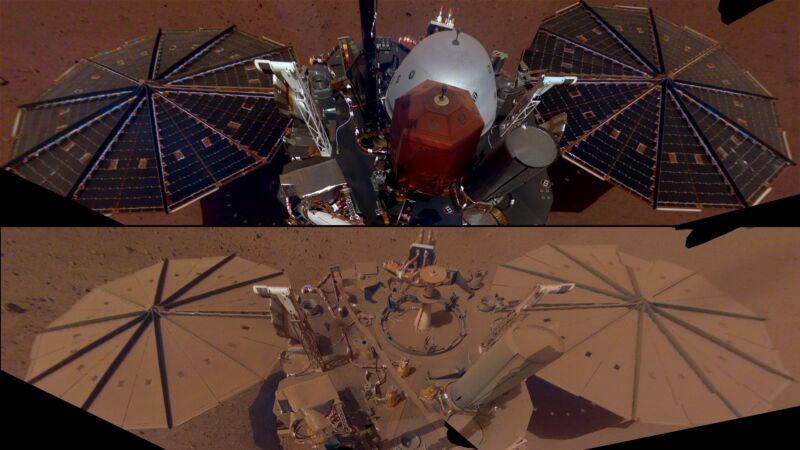
Enlarge / Planetary scientist Paul Byrne created this compilation of NASA images showing the InSight spacecraft on its 10th day on Mars, and the lander 1,201 days later. (credit: Paul Byrne/Twitter/NASA)
Anyone planning to move to Mars should probably account for dust. Lots of dust.
Earlier this month NASA announced that it would soon have to cease science operations on its Mars InSight lander due to diminishing power levels from the vehicle's dust-cloaked solar panels. The spacecraft, which landed on the red planet in November 2018 to study seismic activity, simply cannot produce enough power to operate normally.
InSight has detected more than 1,300 marsquakes, NASA scientists say, including a relatively powerful magnitude 5 quake on May 4. This was the largest marsquake detected to date, and at the upper limit of what scientists hoped to observe. This seismic activity has allowed scientists to tease out details about the inner structure of the red planet.
Read 6 remaining paragraphs | Comments
